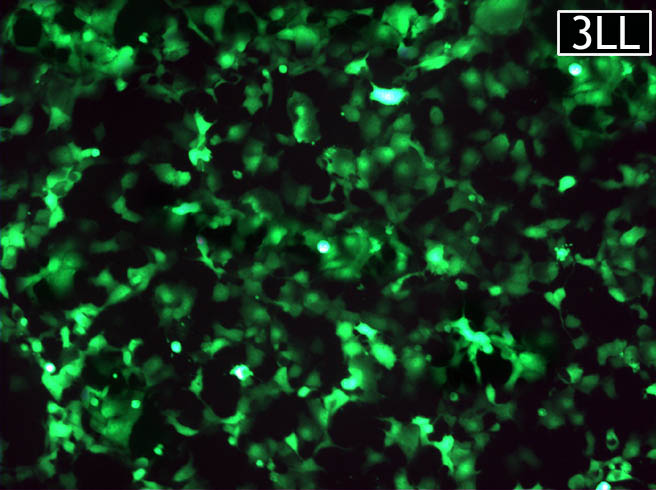EGFIE LLC
We always add value to our customers
Search by Keyword
Product Categories
Description
GenJet™ DNA In Vitro Tranfection Reagent for 3LL cell is pre-optimized for transfecting 3LL cells. 3LL also called Lewis lung carcinoma was discovered by Dr. Margaret R. Lewis of the Wistar Institute in 1951. This tumor originated spontaneously as a carcinoma of the lung of a C57BL mouse. The tumor does not appear to be grossly hemorrhagic and the majority of the tumor tissue is a semifirm homogeneous mass.
Refer to the following optimal transfection conditions for maximal transfection efficiency on 3LL cells. GenJet™ reagent, 1.0 ml, is sufficient for 300 to 600 transfections in 24 well plates or 150 to 300 transfections in 6 well plates.
|
Summary of Optimal Transfection Conditions: |
|
Storage Condition
Store at 4 °C. If stored properly, the product is stable for 12 months or longer

A Picture Showing Transfection Efficiency of GenJet™ Reagent on 3LL Cells. 3LL cells were grown per ATCC recommended culture medium and transfected with pEGFP-N3 by GenJet™. The efficiency was checked 24 hours post transfection
Data Sheet ![]()
Shopping Basket
| Items: | 0 |
| Subtotal: | $0.00 |
Note: All prices in US Dollars
customer@egfie.com